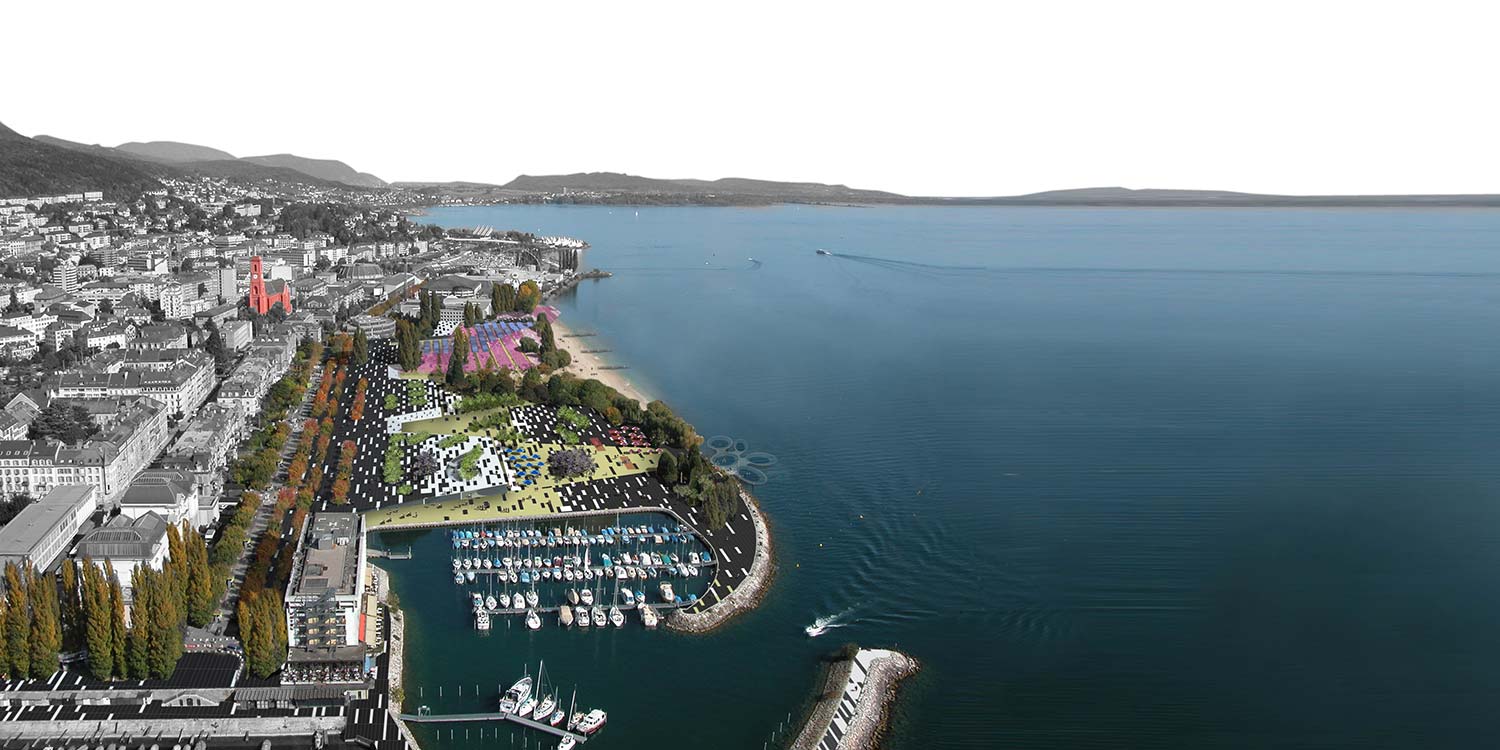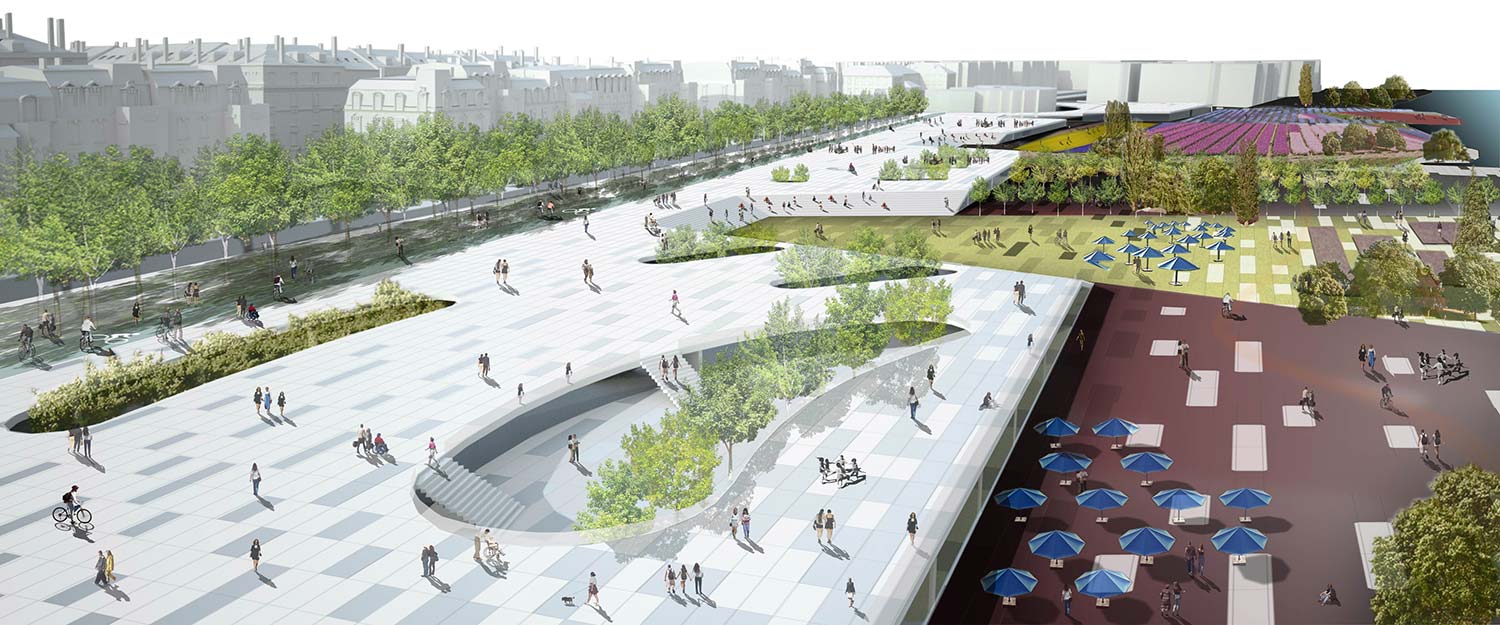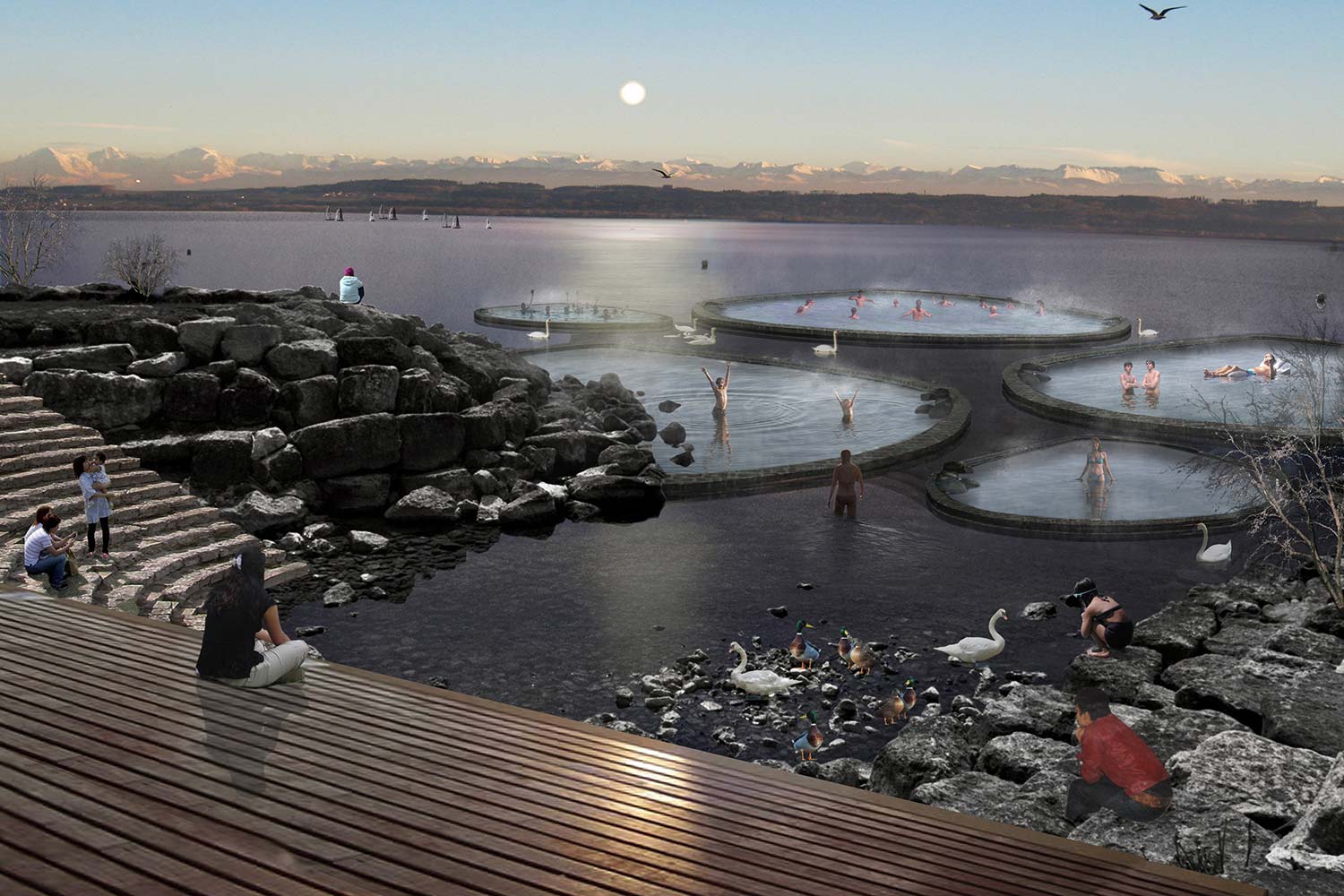


Most of the parks built in the 20th century are the continuity of an inertia generated in the 19th century, where the landscape is incorporated as a decorative element. Public parks are places of contemplation, where the landscape builds a setting for recreation, that is, places to walk, sit, and feel outside the industrial city, and therefore, close to Nature. The 21st century park reflects a new understanding and planning of the city, and they are incorporated as active urban components, key elements in the design of the city and its daily life. Parks should be understood as nodes of activity and production, and consequently, not only as thematic pedestrian walks.
The incredible potential of Neuchâtel’s terrain lies in its location, close to the city center and the lake; its natural and landscape wealth (lake, beach, beach, views of the Alps and more), are extraordinary values that should become an opportunity. Its current condition as an urban vestige (lack of program, topographic barriers and difficulty in managing its scale) can be intervened to be transformed into a new attraction. Understanding and incorporating the existing complexity in the urban context, as well as defining a clear strategy against the landscape, is key to linking this place to the urban structure and turning it into a new centrality node of the city, of the new Neuchâtel.




